Politics
Turkiye says 20 troops killed in Georgia plane crash

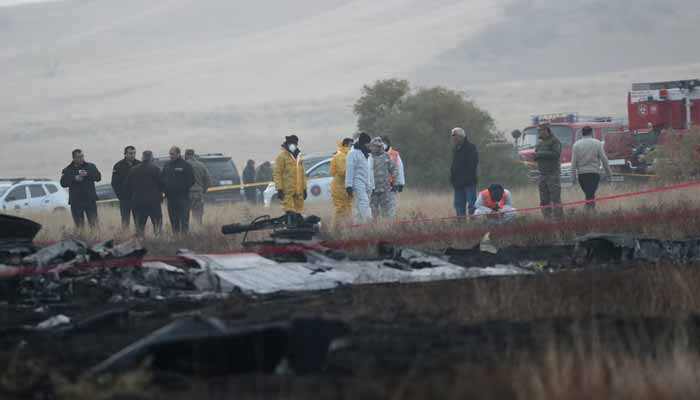
- Turkish C-130 cargo crashed after takeoff from Azerbaijan’s Ganja.
- Turkiye yet to identify cause of deadly military plane crash.
- No distress signal sent before Turkish plane vanished: Georgia.
Turkiye’s defence ministry said on Wednesday that 20 soldiers were killed in the crash of its military aircraft in Georgia a day earlier, as inspectors continued to seek clues what caused the Nato member’s cargo plane to go down.
The C-130 plane took off from Azerbaijan for Turkiye and crashed in Georgia on Tuesday.
Ankara has not yet provided a reason for its deadliest military incident since 2020. It said Turkish and Georgian authorities began inspections at the site, in the Sighnaghu municipality of Georgia’s Kakheti district, at 0330 GMT on Wednesday.
Initial footage from the scene showed chunks of twisted metal strewn across a grassy knoll, while unverified footage on social media showed the plane breaking apart in mid-air and then corkscrewing towards the earth in a blaze.
On Wednesday, the Turkish Defence Ministry released a list of the 20 soldiers killed in the crash.
The leaders of Azerbaijan and Georgia, as well as the NATO Secretary General Mark Rutte, have all conveyed condolences. Tom Barrack, the US Ambassador to Turkiye, has also expressed his country’s solidarity with Turkiye after the crash.
Turkish Defence Minister Yasar Guler on Tuesday spoke to his Georgian and Azerbaijani counterparts, as well as Azerbaijan’s chief of staff, to discuss search and rescue operations.
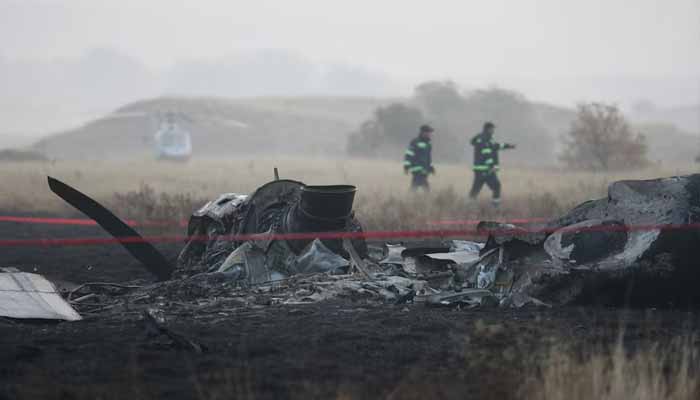
US firm Lockheed Martin, which makes the C-130 Hercules that is widely used by air forces around the world, expressed its condolences and said it was committed to helping Turkiye in any way during the investigation.
The C-130 Hercules is a cargo, troop and equipment carrier aircraft. It is described as a four-engine, turboprop military transport aircraft that can make use of unprepared runways for takeoffs and landings.
Its versatile airframe has enabled it to be used for other purposes as well, including as a gunship and for airborne assault and reconnaissance operations. It is now viewed as one of the main tactical airlifters for many militaries.
Politics
New Delhi car blast death toll rises to 12
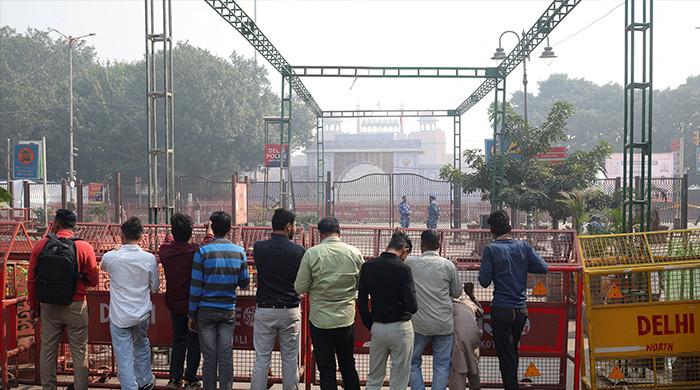

- Police probing if two Kashmiri doctors linked to Delhi blast.
- Doctors, five others held earlier with arms and explosive material.
- No suspects named or arrests made in Delhi explosion yet.
India’s anti-terrorism agency spearheaded on Wednesday the third day of investigations into a car blast in the capital, as a hospital official said the death toll had increased to 12.
Prime Minister Narendra Modi has called the explosion on Monday evening a “conspiracy”, and has vowed that those responsible will face justice.
Police are yet to give exact details of what caused the intense explosion near the historic Red Fort in the crowded Old Delhi quarter of the city, one of India’s best-known landmarks and the site of the annual Independence Day speech by the prime minister.
It was the most significant security incident since April 22, when 26 mainly Hindu civilians were killed at the tourist site of Pahalgam in Indian Illegally Occupied Jammu and Kashmir (IIOJK), triggering clashes with Pakistan.
“Twelve people have died and more than 30 are injured,” Ritu Saxena, the chief medical officer of Delhi’s LNJP hospital, told AFP.
India’s National Investigation Agency (NIA) is leading the probe into the explosion, which came hours after police said they had arrested a gang and seized explosive materials and assault rifles.
Home Minister Amit Shah, after chairing security talks following Monday’s blast, said he had instructed officials “to hunt down each and every culprit behind this incident”.
Indian police are investigating whether there is a link between this week’s car blast in Delhi and the earlier arrest of a group of seven men from the restive IIOJK region, found with arms and bomb-making material, three sources familiar with the probe said on Wednesday.
The blast on Monday evening outside Delhi’s historic Red Fort killed eight people and wounded at least 20, the first such explosion in the heavily guarded city of more than 30 million people since 2011.
Indian authorities are investigating the blast under a stringent anti-terrorism law and have said that all angles are being probed. They have not named anyone or made any arrests in connection with the explosion.
Hours before the blast in Delhi, police in IIOJK said they had arrested seven men, including two doctors, in connection with a separate anti-terror probe and searches in occupied region, as well as in the states of Haryana and Uttar Pradesh that border Delhi.
Police found two pistols, two assault rifles, and 2,900 kg of bomb-making material during the raids, a IIOJK police statement said.
The connection between the Delhi car driver and the seven men arrested is being investigated, the three sources said, speaking on condition of anonymity as they were not authorised to speak to the media on the sensitive issue.
Investigations are focused on whether the driver was a doctor and a colleague of one of the two arrested, one of the sources added.
Following the Delhi blast, IIOJK police carried out raids at hundreds of locations in the Himalayan region and about 500 people were detained, an IIOJK police source told Reuters. Most were released after questioning, the source said.
Spokespersons for the Delhi Police and the National Investigation Agency — the federal anti-terror agency that has taken over the probe — did not respond to requests for comment.
Senior Indian leaders including Prime Minister Narendra Modi have vowed to punish those behind the Delhi blast, with Modi saying no “conspirator” would be spared.
Politics
Japan battles spike in bear attacks
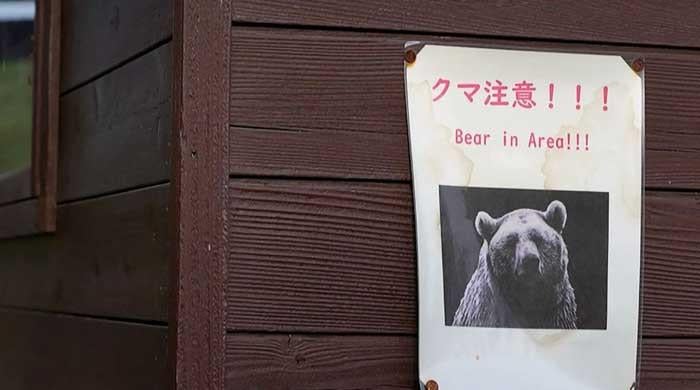

KITA-AKITA: The sense of fear is palpable in parts of northern Japan, where some locals have fastened bells to their bags hoping the noise will keep bears away, while signs warn people to be on guard.
The animals have killed a record 13 people across the country since April, with a steady flow of reports of bears entering homes, roaming near schools and rampaging in supermarkets.
“We hear news almost every day about people being attacked or injured,” said 28-year-old Kakeru Matsuhashi, a traditional “Matagi” hunter, as he walked through a forest clutching a knife.
“It’s becoming something that feels personal, and it’s simply frightening,” he added in the northern prefecture of Akita, an area hit by a series of attacks.
This year, the number of fatalities is double the previous record of 2023-24, with five months of the fiscal year still to go.
Data is patchy from certain regions, but in recent years, Japan has seen among the highest number of fatal attacks globally.
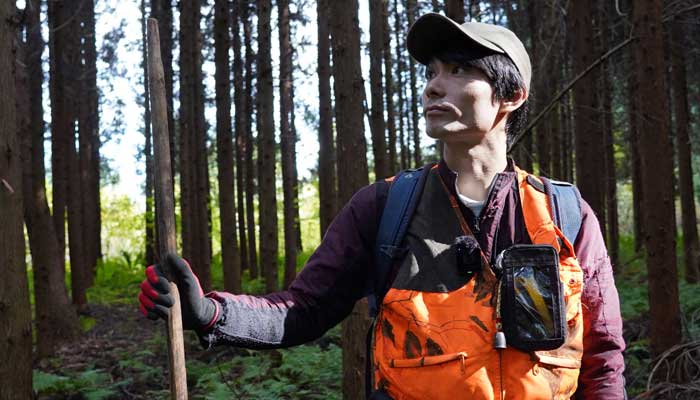
Keiji Minatoya, also from Akita, knows this too well — a bear leapt from his garage, pinned him to the ground and sank its teeth into his face in 2023.
“I was thinking: ‘This is how I die’,” said 68-year-old Minatoya, who managed to escape and take refuge inside his home.
The government is now scrambling to deal with the surge in attacks, which scientists say is being driven by a fast-growing bear population combined with this year’s bad acorn harvest, leaving some mountains “overcrowded” with hungry bears.
Troops have been deployed to provide logistical help for trapping and hunting bears, while riot police will be allowed to use rifles to shoot the animals, which can weigh half a tonne and outrun a human.

The victims include a 67-year-old man in Iwate, a region next to Akita, whose body was found outside his home, with animal bite marks and scars.
Hunters were called to the scene and shot a bear near the house.
Also in Iwate, a 60-year-old man is thought to have been attacked while cleaning an outdoor bath at a remote hot spring resort. His body was discovered in nearby woods.
Official data show the number of wounded is also on course to be a record, tallying over 100 people in the six months to September.
‘Overcrowded’ with bears
A major issue is the expanding bear population, which is growing fast due to an abundance of food — including acorns, deer and boars — under the influence of a warming climate, experts say.
Japan’s brown bear population has doubled in three decades, and now stands at around 12,000, while the number of Asian black bears has climbed on the country’s main Honshu island, reaching 42,000, according to a recent government report.
Some mountains have become “overcrowded”, according to Naoki Ohnishi, researcher at the Forestry and Forest Products Research Institute.
“Put simply, the size of the bear population has gone beyond the capacity of the mountains to hold them,” he said.
Although rising temperatures have led to more frequent bumper crops of acorns, the nuts still produce good and bad harvests every two to five years as part of their normal crop cycle.
This year, as well as in 2023 — the year Minatoya was attacked —there is a poor supply.

While most bears still stay in the mountains, recent bad harvests have led some — together with their cubs — to wander into towns to look for food, said Shinsuke Koike, professor at the Tokyo University of Agriculture and Technology.
With exposure to humans, cubs in particular become less fearful and develop a taste for farmed produce and common fruits such as persimmon, Koike added.
Steady rural depopulation due to a chronically low birthrate and young people moving to cities has also reduced the human presence at the edges of forests and mountains, blurring the traditional boundaries between people and bears.
“Bear habitats inched closer to human habitats in 2023,” Ohnishi said. “This year, they are coming a step further because they are starting from where they left off.”
A disaster
Hajime Nakae, professor of emergency and critical medicine at the Akita University Hospital, said the frequent bear sightings made him feel like he was “living inside […] a safari park for bears”.
The doctor, who has treated bear injuries for three decades, said the nature of wounds was changing as bears became less afraid of humans.
In encounters years ago, a startled bear may have struck a human in the face before fleeing, but now “they charge at you from about 10 metres and then leap at you”.
He said that without meaningful intervention, he expected bear injuries to increase and spread to other parts of the nation, adding: “We are witnessing a disaster.”
“Thorough culling” to reduce the number of bears is the only effective way to reduce the risk for local people, researcher Ohnishi said.
The government last year added bears to the list of animals subject to population control, reversing protection that had helped bears thrive.
But rural resources are stretched thin and the number of hunters is less than half of what it was in 1980.
As of 2020, the latest statistics available, there were around 220,000, mostly in their 60s or older.
Japan culled more than 9,000 bears in 2023-2024, and over 4,200 between April and September this year. Akita has alone culled over 1,000 so far.
In the immediate future, Japan’s worries should ease, if only temporarily.
Experts Koike and Ohnishi said hibernation patterns had not shifted and the bears would soon go to sleep for the winter.
Politics
Typhoon Fung-wong brings floods to Taiwan, thousands evacuated

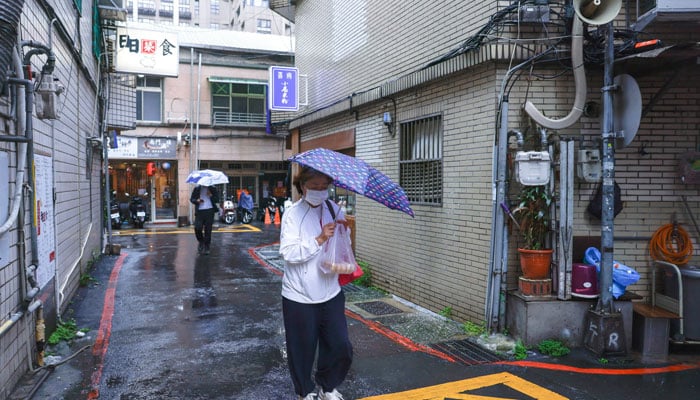
Taiwan evacuated more than 8,300 people ahead of Wednesday’s arrival of a much weakened Typhoon Fung-wong that brought heavy downpours to the mountainous east coast and unleashed floods that ran neck-high in places.
Businesses and schools were shut in most southern areas of the island, with 51 people injured.
Television images showed severe floods in parts of the largely rural eastern county of Yilan, with waters neck-deep as soldiers mounted rescue efforts for those stranded.
“The water came in so quickly,” said fisherman Hung Chun-yi, who spent the night clearing mud from his home in the eastern harbour town of Suao, after its first floor was engulfed in waters 60-cm (2-ft) deep.
“It rained so much, and so fast, the drainage couldn’t take it.”
The fire department said about 8,300 people were moved from their homes to safer areas, mostly in Yilan and nearby Hualien, where a monsoon from the north swelled the rainfall with the unseasonably late typhoon.
Yilan’s town of Dongshan received 794 mm (31 inches) of rain on Tuesday, weather officials said.
Fung-wong is forecast to graze the far southern tip of Taiwan later on Wednesday before heading into the Pacific Ocean. It lost considerable strength after swirling through the Philippines to kill 18 people.
A typhoon in September unleashed floods that killed 18 people in Hualien.
-

 Tech1 week ago
Tech1 week agoThe Security Interviews: Colin Mahony, CEO, Recorded Future | Computer Weekly
-

 Fashion1 week ago
Fashion1 week agoGermany’s Adidas achieves highest-ever quarterly sales in Q3 2025
-

 Business1 week ago
Business1 week agoFirst new Amazon electric heavy goods vehicles hit UK roads
-

 Tech1 week ago
Tech1 week agoTech Traveler’s Guide to Seattle: Where to Stay, Eat, and Recharge
-

 Sports1 week ago
Sports1 week agoWeek 10 Power Rankings: Oregon jumps into the top 5; three teams join the list
-

 Sports1 week ago
Sports1 week agoShaheen Afridi Eyes First ODI Series Win as Pakistan Captain – SUCH TV
-

 Business1 week ago
Business1 week agoBP accelerates overhaul with higher asset sale target as profits beat forecasts
-

 Fashion1 week ago
Fashion1 week agoVietnam’s manufacturing growth hits 15-month high as PMI climbs to 54






